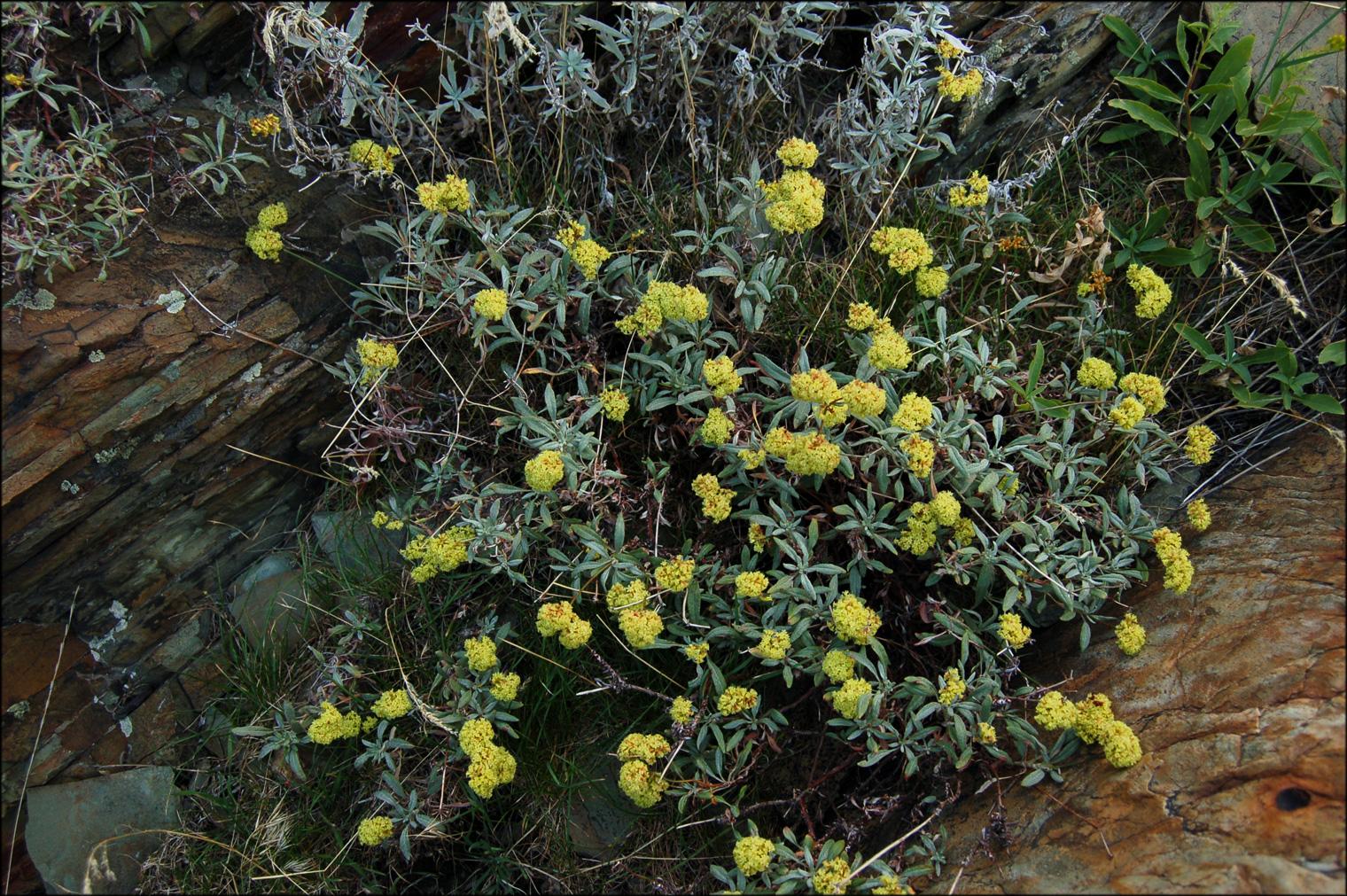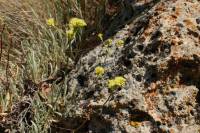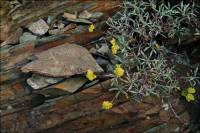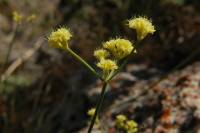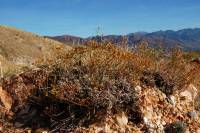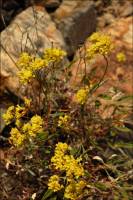|
|
|
|
Family: Polygonaceae
shortstem buckwheat
[Eriogonum brevicaule subsp. grangerense (M.E.Jones) S.Stokes, moreEriogonum brevicaule var. wasatchense (M. E. Jones) Reveal, Eriogonum campanulatum Nutt., Eriogonum nudicaule subsp. garrettii S.Stokes, Eriogonum nudicaule subsp. parleyense S.Stokes, Eriogonum wasatchense M.E. Jones] |
Herbs, matted, cespitose, pul-vinate, erect or spreading, some-times scapose, (0.3-)1-5 × 1-5(-8) dm, tomentose to floccose or glabrous, grayish or greenish to green. Stems matted to spreading, occasionally with persistent leaf bases, up to 1/4 or more height of plant; caudex stems matted or spreading; aerial flowering stems spreading to erect or nearly so, slender, rarely stout, solid, not fistulose, (0.4-)0.5-2(-2.5) dm, glabrous, floccose, or sparsely to densely tomentose to lanate. Leaves basal or more commonly sheathing 1-7(-15) cm up stem, 1 per node; petiole 0.2-2(-4) cm, tomentose to floccose; blade linear, oblanceolate, or spatulate to elliptic, (0.2-)1-10(-12) × 0.1-0.9(-1.2) cm, densely tomentose abaxially, less so to floccoseadaxially, margins plane or revolute, sometimes crenulate. Inflorescences cymose, subumbellate, umbellate, or capitate, (1-)3-10(-25) × (0.7-)1-10(-15) cm; branches dichotomous, sometimes absent, tomentose to floccose or glabrous; bracts 3, triangular, scalelike, 1-3(-5) mm. Peduncles absent or erect, 0.3-3 cm, tomentose to floccose or glabrous. Involucres 1 per node or 3-7(-9) per cluster, turbinate to turbinate-campanulate, 1.5-4(-5) × (1-)1.5-3(-3.5) mm, tomentose to floccose or glabrous; teeth 5, erect to spreading, 0.3-1 mm. Flowers (1-)2-4 mm; perianth various shades of white to cream or yellow, glabrous or pubescent; tepals connate proximal 1/ 1/ 3, mono-morphic, lanceolate, oblong to obovate or ovate to oval; stamens exserted, 2-4 mm; filaments pilose basally. Achenes light brown to brown, 2-3 mm, glabrous except for roughened to papillate beak. Eriogonum brevicaule is highly variable, and the variation has yet to be fully resolved taxonomically. The expressions recognized here will encompass the vast majority of populations. The extreme variation previously under the name var. laxifolium is now reduced with the recognition of var. bannockense (low-elevation or northern phase), var. nanum, and var. caelitum (high-elevation, southern phases). Essentially all of the following species (28-63 below) belong to the Eriogonum brevicaule complex. Eriogonum desertorum, E. loganum, E. spathulatum, E. ostlundii, and E. artificis are allied to the complex associated with var. laxifolium, while E. natum is related to var. cottamii. Eriogonum viridulum and E. ephedroides are allied to E. brevicaule var. brevicaule as are E. contortum and E. acaule. Eriogonum brandegeei is also related, but exactly how is less certain. Allied to this complex of species are on the one hand those related to E. batemanii, and on the other all of the matted perennials belonging to the E. ochrocephalum complex. Essentially all of these species form relatively small populations on discrete edaphic sites and are well isolated one from the other. Unfortunately, a clear separation of E. brevicaule from E. desertorum, E. loganum, and E. spathulatum is not always possible.
|


